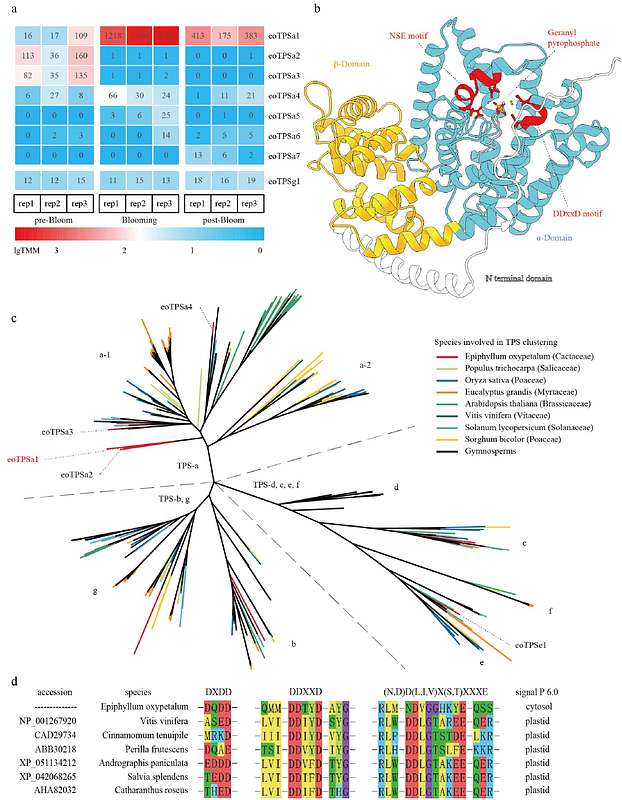Dynamic floral scent profile of Epiphyllum oxypetalum and the cytosolic biosynthesis of trans-Geraniol through mevalonate pathway

Dynamic floral scent profile of Epiphyllum oxypetalum and the cytosolic biosynthesis of trans-Geraniol through mevalonate pathway
Zhang, Y.; Tian, Q.; Zhang, Y.; Xiao, H.; Sun, Q.; Li, T.
AbstractEpiphyllum oxypetalum, a renowned ornamental species in Cactaceae, unveils its attractive fragrance during its infrequent and rapid night blooming. However, the nature of this floral scent remains unexplored. Employing GC-MS, transcriptome and biochemical assay, we systematically characterized the composition, emission dynamics and biosynthesis of E. oxypetalum floral scent. Composition of the floral scent was highly dynamic, with 72.54% trans-Geraniol, 12.96% benzyl alcohol and 3.75% methyl salicylate at full bloom. From 22:00 to 05:00 the following day, the strong scent was primarily released from petals and sepals. Proved by inhibitor assay, the precursors for the dominant scent volatile trans-Geraniol are derived from amyloplast degradation and mevalonate (MVA) pathway. Together with the cytosol-localized geraniol pyrophosphate synthase EoGDPS and geraniol synthase EoTPSa1, we proved an uncanonical cytoplasmic biosynthesis route for monoterpene volatiles in E. oxypetalum petal. Our study on the dynamic floral scent profile and its biosynthesis posed the first detailed analysis of cactus floral scent. These results laid foundation for novel perfume development and future inquiries on specialized pollination coevolution in Cactaceae.